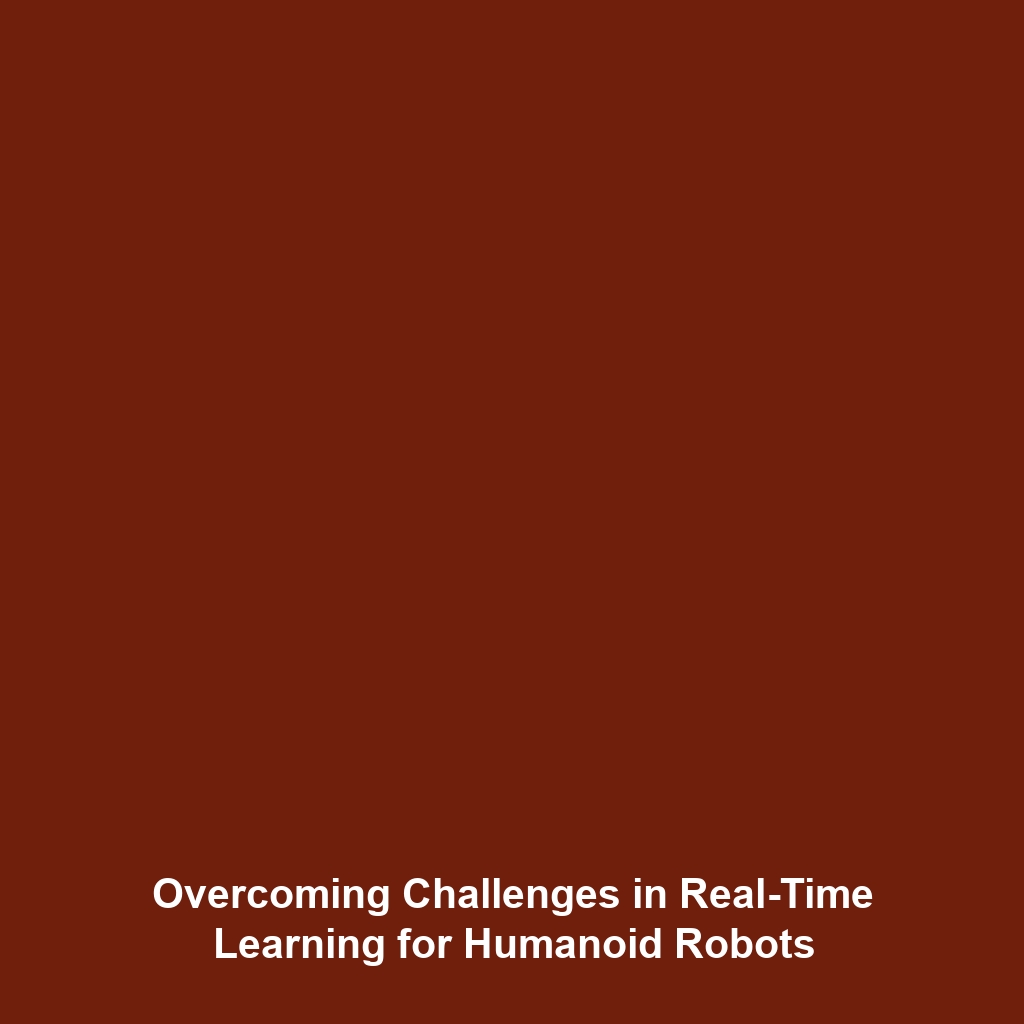How Humanoid Robots Use Reinforcement Learning to Improve Walking, Balancing, and Task Performance
Introduction
The integration of reinforcement learning in humanoid robots represents a significant leap forward in the field of robotics. This advanced technology allows robots to learn from their environments through trial and error, which is particularly crucial in improving their walking, balancing, and task performance. As these robots increasingly navigate complex environments and perform intricate tasks, understanding how they utilize reinforcement learning becomes imperative. This article will delve into the mechanics of this learning process and its implications for the evolution of humanoid robots.
Key Concepts
To understand the significance of reinforcement learning in humanoid robots, it’s essential to explore several major concepts:
1. Reinforcement Learning Fundamentals
Reinforcement learning (RL) is a type of machine learning where an agent learns to make decisions by receiving feedback from its environment. In the context of humanoid robots, this means they can adjust their actions based on successes and failures in real-time.
2. Walking and Balancing Techniques
Humanoid robots employ RL algorithms to optimize their walking and balancing mechanisms. By simulating various movements, robots learn the most efficient and stable ways to traverse uneven terrains or avoid obstacles.
3. Task Performance Optimization
Beyond basic locomotion, robots leverage reinforcement learning to enhance their task performance, such as picking objects, interacting with humans, or adapting to dynamic environments. These capabilities are critical for the next generation of humanoid robotics.
Applications and Real-World Uses
The applications of reinforcement learning in humanoid robots are diverse and show promise across several sectors:
- Healthcare: Humanoid robots are increasingly used in rehabilitation programs, assisting patients in physical therapy by providing personalized feedback based on patient movements.
- Service Industries: Robots equipped with RL capabilities can handle tasks in hotels and restaurants, such as serving food or guiding guests, by adapting to their environment dynamically.
- Manufacturing: Advanced humanoid robots assist in assembly lines by learning and improving efficiency in tasks like sorting and inventory management.
These practical uses highlight how humanoid robots with reinforcement learning capabilities are making strides in real-world environments.
Current Challenges
Despite the undeniable advancements, there are several challenges associated with the application of RL in humanoid robots:
- Computational Complexity: Training robots to learn effectively often requires substantial computational resources.
- Safety and Ethics: Ensuring the safety of humanoid robots while they learn in human-centric environments is a critical concern.
- Data Requirements: RL relies on vast amounts of data for effective training, which poses a challenge in data collection and processing.
Future Research and Innovations
Looking ahead, several innovations are on the horizon for humanoid robots utilizing reinforcement learning:
- Improved Algorithms: Research is ongoing into more efficient RL algorithms that require less data and computation.
- Real-Time Learning: Next-gen technologies may allow humanoid robots to learn in real-time while operating in unpredictable environments.
- Interdisciplinary Approaches: Collaborations across fields like neuroscience and psychology are expected to yield breakthroughs in robot learning capabilities.
Conclusion
In summary, humanoid robots are greatly enhanced by using reinforcement learning to improve their walking, balancing, and task performance. This technology not only advances the efficiency of robots but also broadens their applications in various fields. As we continue to explore and innovate in this area, the future of humanoid robots looks promising. For more information on robotics and similar topics, consider visiting our other articles on machine learning and AI in robotics.

